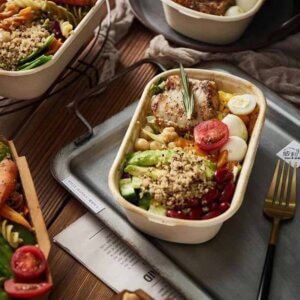- Plastic Deli Containers
- Pros of Plastic Deli Containers
- Cons of Plastic Deli Containers
- Printing Technology on Plastic Deli Containers
- Paper-Based Deli Containers
- Pros of Paper-Based Deli Containers
- Cons of Paper-Based Deli Containers
- Printing Technology on Paper-Based Deli Containers
- Biodegradable and Compostable Options
- Pros of Compostable Deli Containers
- Cons of Compostable Deli Containers
- Printing Technology on Compostable Deli Containers
Everyone likes to enjoy delicious food in a restaurant, at home, or go out for a picnic, but few people notice the food containers that fit with different cooked food, we call them deli containers. They are holding food on your table, and are also available for takeout purposes.
If you are a restaurant owner or chef, this blog will be very helpful for you to choose the most suitable deli containers for your restaurant and canteen.
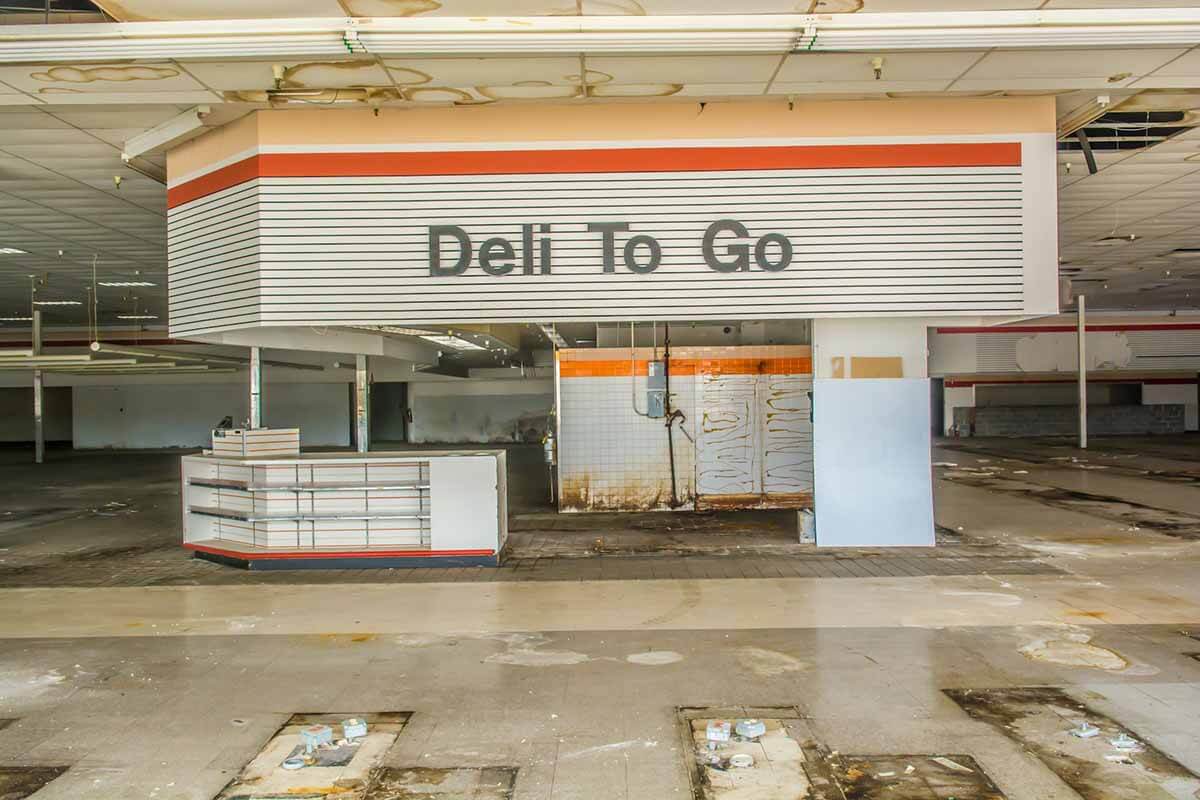
What is a Deli Container?
Deli containers are a type of food storage container that is mainly used in restaurants, delis, school cafeterias, and households for storing and packing food, like salads, fruits, sauces, rice, and other prepared foods, can be made of different materials in various sizes.
Types of Deli Containers
Due to the different requests for food storage and presentation, you can see various deli containers in the market to serve different foods. Let us have a deep look at these types.
Plastic Deli Containers
In the past, plastic deli containers have always been the materials used to make the deli food containers. They are in various sizes and shapes, offering convenience and versatility to users.
Pros of Plastic Deli Containers
- Lightweight: Deli plastic containers are lightweight and easy to handle, very convenient for storage and takeout.
- Transparent: Plastic deli containers with lids are always transparent, this is good for users to identify what’s inside without opening the lid.
- Versatile: Deli plastic containers with lids can be manufactured into various sizes and shapes, and can pack different types of foods.
- Cost-Effective: Food containers made from plastic materials are inexpensive, this material is cheaper compared to other food packaging materials.
- Durable: Plastic deli container is durable and resistant to breakage, suitable for repeat use.
Cons of Plastic Deli Containers
- Not Environmentally Friendly: As all of us know, plastic materials are not eco-friendly and take hundreds of years to decompose in landfills.
- Chemical Harm: Plastic deli containers include harmful chemicals, such as BPA, so, when you heat the food in the container, these chemicals can leach into the food.
- Not Microwave Safe: You should check with the manufacturer or seller whether the plastic deli container is microwave safe or not, since not all the containers in the market are microwave safe.
- Remaining Odor: Deli containers are designed for single use, but the plastic ones, people always like to reuse them, so residual odor and color from past use will remain on the container.
- Temperature Limitation: The general deli plastic container’s heat resistance is from 20°C to +120°C, but not all the plastic material can hold high temperatures, some plastic will wrap or melt when they meet high temperatures, you need to read the user manual or ask the seller.
Printing Technology on Plastic Deli Containers
Some clients also required printing logos on the containers for branding purposes, let’s take a look at the printing technology on the plastic deli containers.
- Screen Printing: This method allows for various colors printing through a mesh screen, screen printing is durable and cost-effective, very suitable for mass production.
- Digital Printing: Printing on containers by digital technology can offer high-quality complex designs, variable data printing, and quick turnaround times.
- Pad Printing: People use pad printing technology on the food container is transfer the logo by using a silicone pad, this technology is suitable for providing precise and detailed printing on curved and irregular surfaces.
- Heat Transfer Printing: This method is also suitable for complex designs by using heat and pressure, printing result is durable.
- In-Mold Labeling (IML): IML involves placing pre-printed labels into the mold before injecting plastic. It creates a seamless integration of the label with the container, offering high-quality graphics and durability.
- Labeling: You can ask the deli food storage containers supplier to print the logo on a separate label and just stick the label on the food container or wrap the label around the container. This method is suitable for short runs and seasonal promotions.
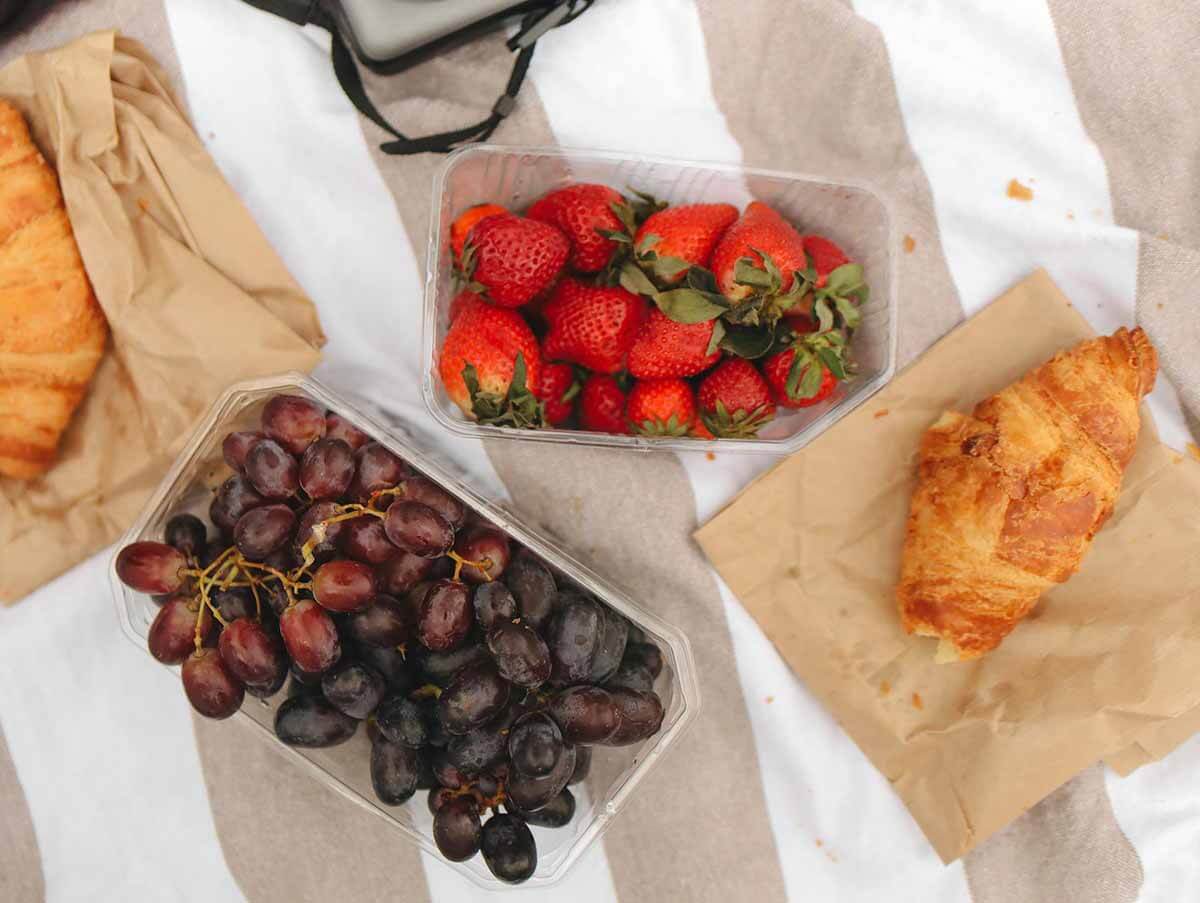
Paper-Based Deli Containers
Paper-based deli containers are single-use food containers made from paper or cardboard. They are commonly used in delis, restaurants, and other food service establishments to pack salads, sandwiches, and desserts. These containers can provide a more sustainable alternative to plastic deli containers.
Pros of Paper-Based Deli Containers
- Eco-Friendly: The container with paper material is biodegradable and compostable, it can break down in the natural environment quickly, more sustainable than plastic.
- Renewable Resources: Paper is made from wood pulp, this material is a renewable resource, making this container more environmentally friendly. Using paper as the food container material is a big step for us to move towards environmental protection.
- Customizable: Paper-based food containers are easy to customize with your brand name, logo, design, and pattern.
- Easy to Recycle: Paper is one of the most recyclable materials in the world, you can see paperboard accounts for 67% of total municipal solid waste (MSW) recycled in the United States. So, paper is a much better material to make food container than the plastic.
- Microwave-Safe: Part of the paper-based deli containers are microwave-safe, you should see if there is a mark on the container. If yes, the food inside the container can be reheated without using another container.
Cons of Paper-Based Deli Containers
- Limited Moisture Resistance: Even if the paper-based container has a moisture-resistant layer when you use the container to hold moist or greasy food, it will still become soggy and leak.
- Less Durable: Deli food containers made of paper material are less durable than plastic.
- Limited Temperature Resistance: Paper food containers are not suitable for too hot or too cold food, since they are easy to lose their shape when exposed to extreme temperatures.
- Cost: Generally, paper deli containers are a little more expensive than plastic food containers.
- Poor Barrier Properties: Due to water, air, and some chemicals have certain permeability to paper packaging, so using paper food containers to achieve a high level of protection is a challenge.
Printing Technology on Paper-Based Deli Containers
- Flexographic Printing: This method is suitable for mass production and provides excellent ink adhesion and color vibrancy by using flexible relief plates to transfer ink onto the paper surface.
- Offset Printing: Offset printing uses the technology of transferring ink from a plate to a rubber blanket and then onto the paper substrate. This method is suitable for printing detailed designs and logos in high quality and consistent results.
- Digital Printing: Digital printing is suitable for small batch orders and personalized orders. This technology can print the customized design directly onto paper-based materials.
- Labeling: This method is versatile for all the packing, you can print the logo and design on the sticker or a paperboard, then stick on the food container or cover around the container as the sleeve.
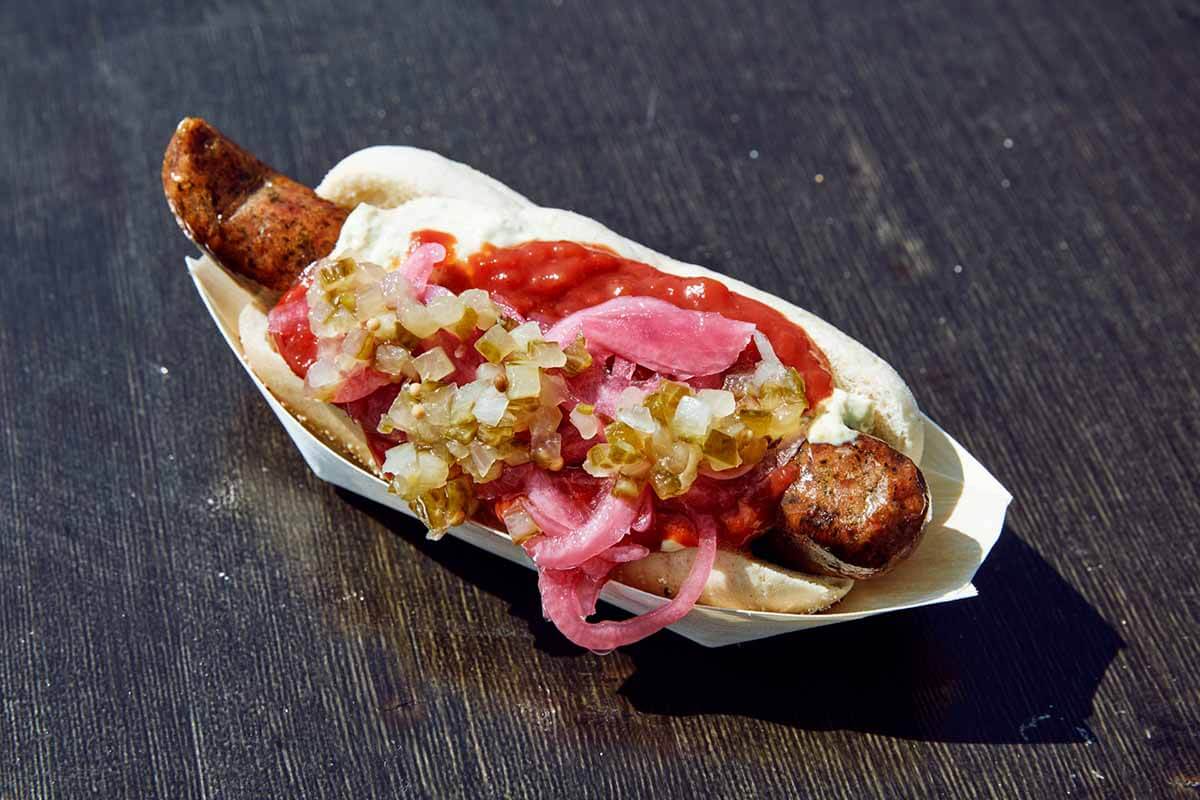
Biodegradable and Compostable Options
Based on environmental protection requirements and the improvement of people’s environmental awareness, biodegradable and compostable deli containers appear in various dining establishments. The compostable deli containers can break down naturally over time, through microbial action, into non-toxic components that blend harmlessly with the soil. This container is mainly made from plant-based material, such as cornstarch or sugarcane to minimize the environmental impact.
Pros of Compostable Deli Containers
- Environmental Sustainability: Compostable deli containers made from plant-based materials, reduce reliance on finite fossil fuels.
- Biodegradability: These containers can naturally break down into compost, reducing the waste in landfills.
- Reduced Environmental Impact: Compostable materials produce fewer greenhouse gas emissions and pollution compared to plastic materials.
- Brand Effect: Using compostable deli containers can establish in the minds of consumers that your company is an environmentally friendly and sustainable enterprise.
- Water and Oil Resistance: Bagasse containers are sturdy, water and oil-resistant, and won’t easily get wet.
Cons of Compostable Deli Containers
- Cost: Producing compostable deli containers will have a higher cost compared to traditional plastic.
- Performance Variability: Doesn’t like plastic containers, compostable materials, such as bagasse, cornstarch, and wheat straw, their durability, heat resistance, and moisture resistance performance may vary according to different applications.
- Industrial Composting Infrastructure: Not all the regions are equipped with composting facilities, this is a limitation factor to use compostable deli container.
- Consumer Education: Local governments need to organize education to increase consumer understanding of how to dispose of compostable materials to further benefit the environment.
Printing Technology on Compostable Deli Containers
Let us have a look at the printing technology of deli containers in bagasse, cornstarch, and wheat straw material.
- Water-based Ink Printing: Water-based inks do not contain harmful chemicals and solvents, this eco-friendly printing method is suitable for printing simple logos and designs on the container surface.
- Offset Printing: Offset printing technology transfers an inked image from a plate to a rubber blanket, and then onto the container’s surface. This method is used to print detailed logos and designs.
- Flexographic Printing: Flexographic printing is a cost-effective and fast printing method to print simple logos and patterns, suitable for mass production. The technology uses flexible relief plates to transfer ink onto the container’s surface.
- Digital Printing: This technology can directly print the image on the food container and is suitable for customized orders in small quantities.
- Heat Transfer Printing: This method uses heat and pressure to transfer a printed design onto the container’s surface. If your logo design and pattern are complex, you can use this method.
- Embossing or Debossing: Embossing and debossing techniques create raised or recessed impressions of a logo or design on the container’s surface. This printing method creates texture and visual interest in the containers.
- Labeling: You can make a label or a sticker with your logo or your desired patterns, then attach it to the compostable deli container.
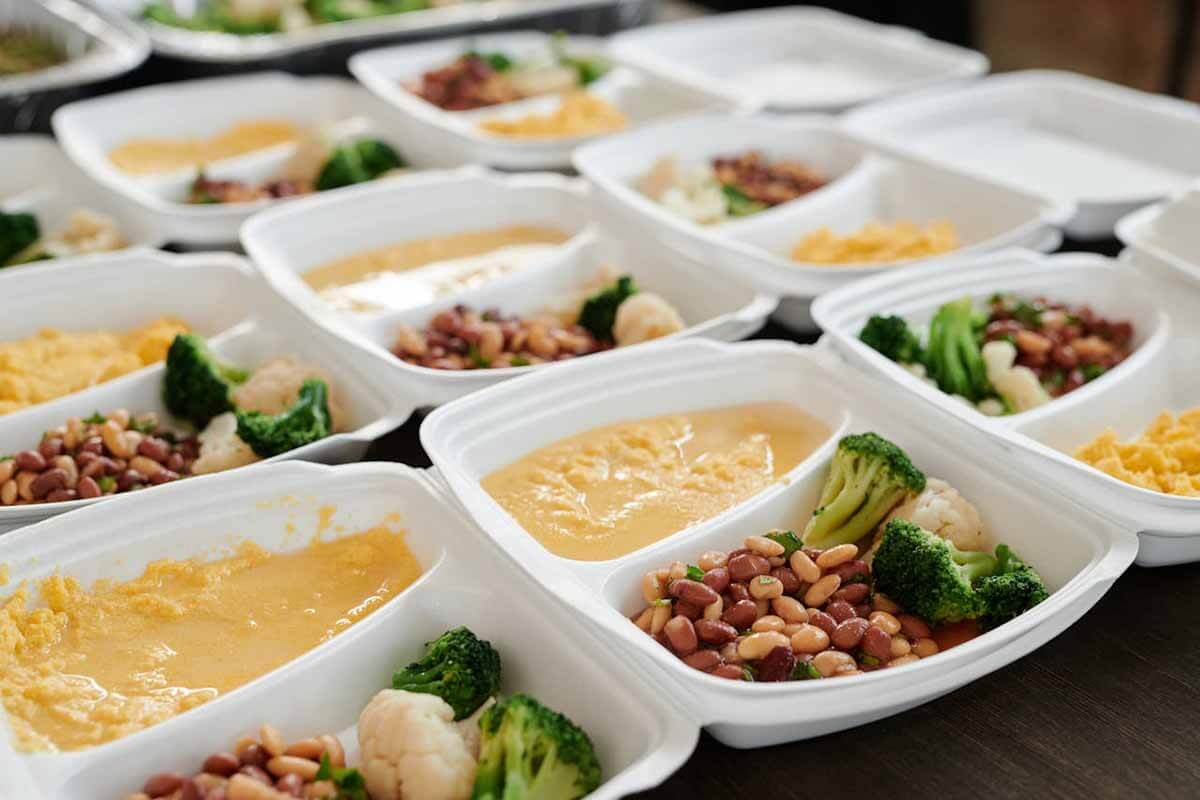
Factors to Consider When Choosing Deli Containers
Whether you want to wholesale food containers or buy deli containers for your restaurant, you need to consider the below factors to help you purchase high-quality products.
Deli Container Sizes
Whether you are the restaurant owner or the baking shop owner, choosing precise deli container sizes is very important for you. When deli container sizes match your portion sizes, it will help you to save the food cost and the food presentation is also very beautiful.
Deli Container Materials
Deli container material is an important indicator before your purchasing, you should consider it as detailed as possible. Such as your food type, your food business, environment impact, food temperature, food safety, container durability, and cost.
Sealability and Leak Resistance
If you are going to buy deli containers with lids, the sealability and leak resistance of the container are very important to ensure the food quality.
Transparency and Visibility
According to the properties of your dishes, you can choose whether you need clear deli containers or only deli containers with clear lids. However, presenting the aesthetics of dishes to consumers will help increase their satisfaction.
Stackability and Storage Efficiency
Stackable containers are a good choice to save your kitchen room. So before purchasing, whether the deli container allows you to save kitchen space and improve work efficiency is an important consideration.
FAQs about Deli Containers
Q: Are deli containers microwave-safe?
A: In general, most deli container materials are microwave-safe. But, you need to check whether your food container has the microwave-safe symbol.
Q: Where to wholesale deli containers?
A: We suggest you wholesale deli containers from the manufacturer in large quantities at a good price. Eco March is one of the compostable deli container manufacturers in China, custom from us Today!
Q: Are deli containers reusable?
A: Whether deli containers can be reused depends on materials and how they are used. Most of them are designed for single use.
John Q
John Q is Eco March’s Product Manager. With 5 years of prior experience in the food industry after graduating from university, he has been an integral part of Eco March. He excels in creating and developing eco-friendly food packaging products with a keen focus on enhancing the consumer experience.
Latest Products
Contact Us
Phone: +86 1358 4476 870
WhatsApp: +86 1358 4476 870
Email: info@ecomarch.com
Address: No.1179, TangShi Road, YangShe Town, ZhangJiaGang City, Jiangsu Province, China

